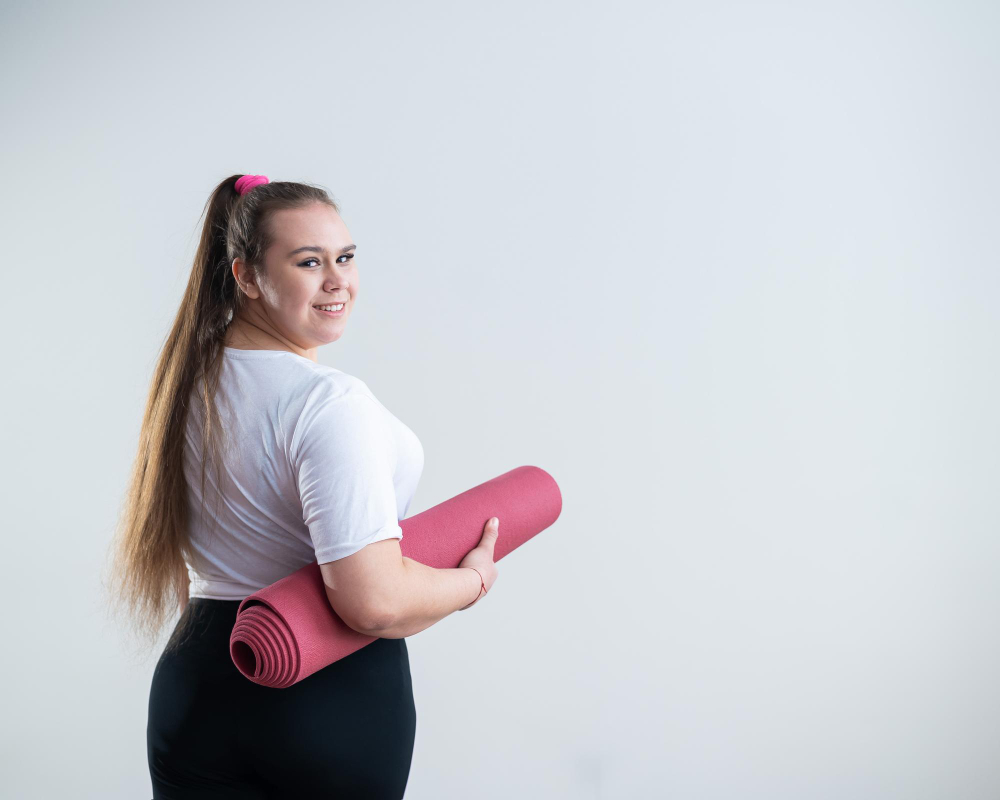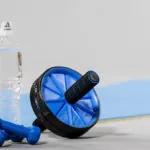Getting started isn’t easy. Especially when your body’s carrying extra weight and even basic movements feel like a challenge. You’re not lazy. You’re not broken. You’re just starting from a different place.
Now, you’ve probably heard all the hype about HIIT. Quick, efficient, torches calories, keeps your body burning fat even after the workout. Sounds great, right? Until you hit play on a “beginner” HIIT video and see mountain climbers, jump squats, and burpees flying at you like they’re nothing.
That’s not built for you. This is.
This guide to HIIT for obese beginners skips the unrealistic moves and focuses on what actually works. You will find here simple, low-impact exercises that build you up without breaking you down.
Should Obese Beginners Do HIIT?
Yes, but with the right mindset.
You don’t need to “earn” your way into HIIT. You just need to start slow. At this stage, HIIT shouldn’t be about burning max calories, chasing after six-pack promises, or forcing yourself into moves that leave you gasping and discouraged.
It should be more of a format, not a miracle.
HIIT for obese beginners simply means short bursts of effort followed by rest. That could be seated punches, step-ups on a low surface, or even wall pushes. No jumping. No running. Just moving at your pace.
And if doing a quick, low-impact workout for 10-15 minutes feels more manageable than walking for an hour, then HIIT might be the right tool for you. That’s reason enough to try it. No need to get hung up on “afterburn effects” or trending fitness fads.
But if you’re expecting HIIT to be the magic fix for everything overnight? You’ll be disappointed. The truth is, any exercise can help if you stick with it. So don’t chase hype. Find what suits you the most.
Examples: HIIT for Obese Beginners
If you’ve already read our guides on easy exercises for obese people and calisthenics for overweight beginners, you know we’re all about starting easy.
Here are some of the best beginner-friendly exercises you can plug into a low-impact HIIT workout:
Upper & Lower Body Moves
Toe Taps (Seated)
Easy on the joints, great for warming up circulation and waking up the lower legs.
Trunk Rotations
Builds core mobility and improves spine flexibility. Perfect if you’ve been sedentary.
Sit-to-Stand
One of the most functional exercises you can do. Builds strength for everyday movement.
Arm Circles
Boosts shoulder mobility and preps the upper body. Ideal as a warm-up or active rest.
Arm Raises
Helps build shoulder endurance and improve posture, without straining the joints.
Seated Leg Extensions
Great for strengthening your quads and protecting your knees, especially if walking hurts.
Marching or Stepping in Place
Gets the heart rate up safely and gently, and no jumping is required.
Side Steps
Targets hips, thighs, and glutes while sneaking in a little cardio.
Walking, Cycling, or Swimming
All solid options for cardio intervals. Low-impact and easy to scale based on energy levels.
Calisthenics Progressions
Incline Push-Ups / Wall Push-Ups
Build upper body strength without putting full weight on your arms or wrists.
Negative or Band-Assisted Pull-Ups
Great if you’re working toward pull-ups but need to ease into the movement.
Chair Squats
Strengthens glutes, quads, and hamstrings in a safe, supported way.
Bench Dips
Focuses on triceps and shoulders while keeping your feet grounded for support.
If you want to focus your beginner HIIT exercises on abdominal muscles, try this program.
How to Turn These Into HIIT Workouts
Creating your own HIIT routine is simple. Here’s a basic format you can follow:
The 30/30 Rule:
- 30 seconds of movement (e.g., toe taps, wall push-ups, sit-to-stand)
- 30 seconds of rest or gentle movement (e.g., slow marching, deep breaths)
For example:
- Arm Raises 30 sec
- Rest 30 sec
- Sit-to-Stand 30 sec
- Rest 30 sec
- Seated Leg Extensions 30 sec
- Rest 30 sec
- Marching in Place 30 sec
- Rest 30 sec
That’s one round. Do 2-3 rounds total, or just one if you’re starting out.
Final Thoughts
You don’t need to push through pain, chase perfection, or keep up with workouts that weren’t made for your body. HIIT for obese beginners is about meeting yourself where you are and building from there.
If a short, low-impact routine feels doable today, that’s a win. If it gets you moving when nothing else does, that’s progress. Just focus on consistency, and the results will follow.





